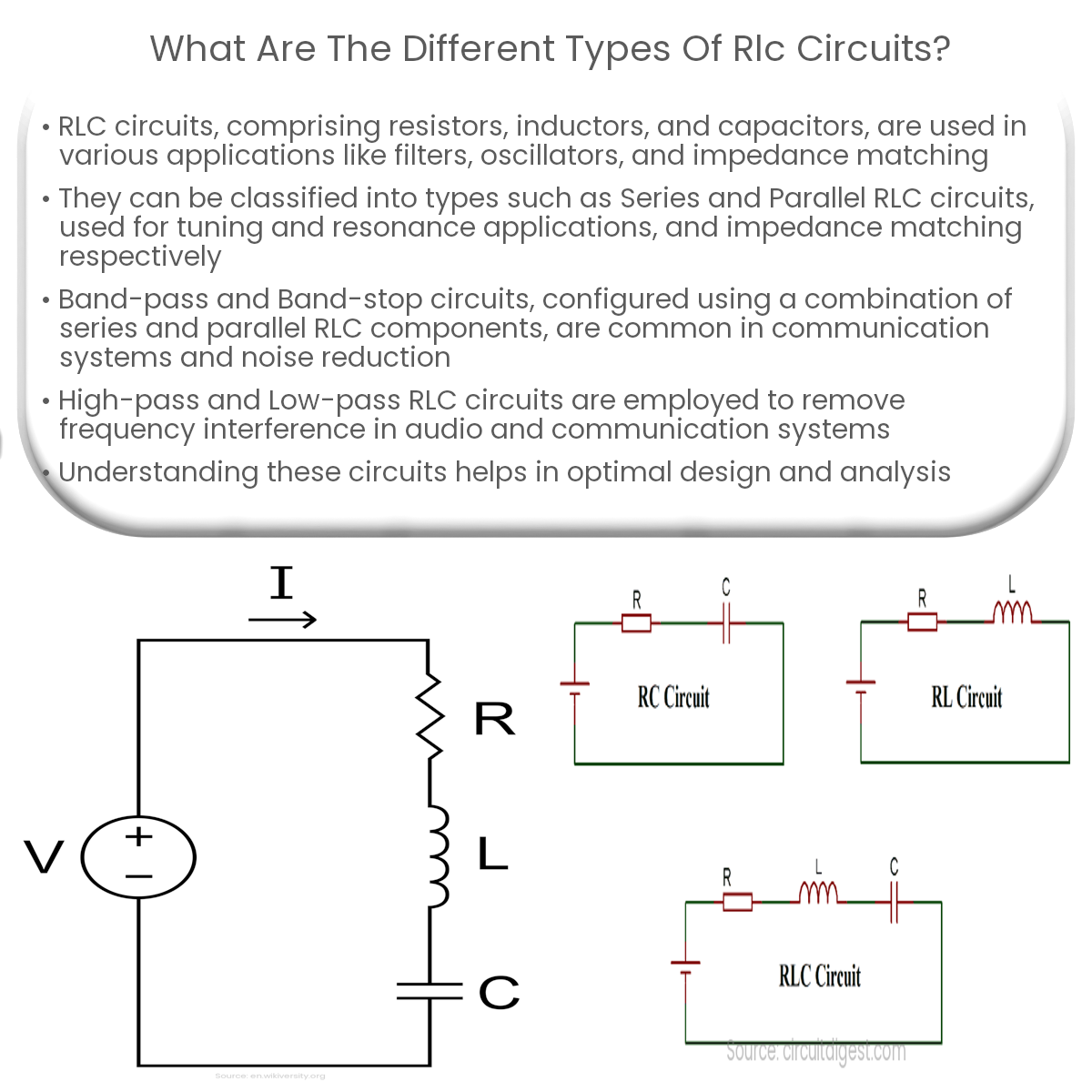RLC circuits can be series, parallel, band-pass, band-stop, high-pass, or low-pass, each serving specific functions in electrical and electronic systems.
Different Types of RLC Circuits
RLC circuits are electrical circuits that consist of resistors (R), inductors (L), and capacitors (C). They are used in various applications such as filters, oscillators, and impedance matching. RLC circuits can be classified into different types based on their configurations and the arrangement of their components:
1. Series RLC Circuit
In a series RLC circuit, the resistor, inductor, and capacitor are connected in series, forming a single loop. The current flowing through all components is the same. This type of circuit is commonly used for tuning and resonance applications.
2. Parallel RLC Circuit
In a parallel RLC circuit, the resistor, inductor, and capacitor are connected in parallel, creating multiple paths for current flow. The voltage across all components is the same. This type of circuit is often employed in filters and impedance matching applications.
3. Band-pass RLC Circuit
A band-pass RLC circuit is designed to allow a specific range of frequencies to pass through while attenuating frequencies outside this range. This type of circuit can be configured using a combination of series and parallel RLC components, and is commonly used in radio and communication systems.
4. Band-stop RLC Circuit
A band-stop RLC circuit, also known as a notch filter, is designed to attenuate a specific range of frequencies while allowing other frequencies to pass through. This type of circuit can also be configured using a combination of series and parallel RLC components, and is often used in noise reduction and signal processing applications.
5. High-pass RLC Circuit
A high-pass RLC circuit allows frequencies above a certain cutoff frequency to pass through, while attenuating lower frequencies. This type of circuit is commonly used in audio and communication systems to remove low-frequency noise and interference.
6. Low-pass RLC Circuit
A low-pass RLC circuit allows frequencies below a certain cutoff frequency to pass through, while attenuating higher frequencies. This type of circuit is frequently used in audio and communication systems to remove high-frequency noise and interference.
In conclusion, RLC circuits are versatile and can be configured in various ways to serve specific functions in electrical and electronic systems. Understanding the different types of RLC circuits can help engineers and technicians design and analyze circuits for optimal performance.


